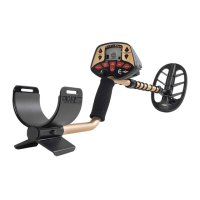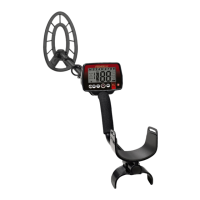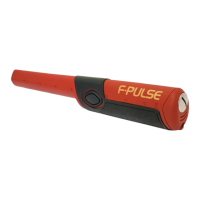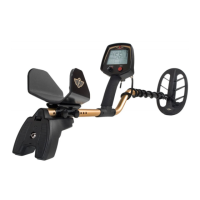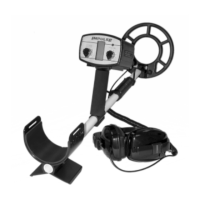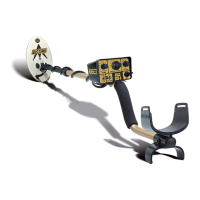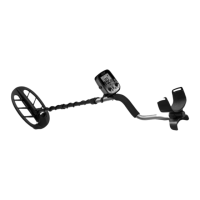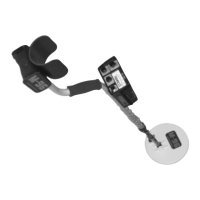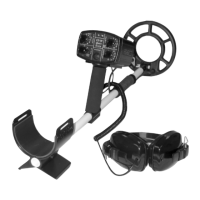DISCRIMINATION AND
Press DISCRIMINATION or at any time (other than immediately
after pressing ) to adjust the target discrimination level.
and
will increase or decrease the level of discrimination. Each press of
the pads will cause a target icon to appear or disappear on the display. When
an icon is not illuminated, the corresponding target category will be eliminated
from detection. No audible tone nor target-icon will appear when the
searchcoil passes by an object in a category which is not illuminated.The Dime,
Qtr, and
+
target categories cannot be eliminated from detection.
While searching, the only target category icons visible are those indicating
detected targets; no more than one is visible at a time while searching. In
order to display the discrimination status, press either the DISC or key.
The first press of either DISC or displays the current discrimination status
(eliminated target categories are not displayed — all accepted target
categories are illuminated).
This first key press does not change the
discrimination status; each subsequent DISC
or will change the discrimination
setting, with icons either disappearing or
reappearing.
7
The operating controls are as follows:
SENSITIVITY
AND
These controls change the detector’s sensitivity; higher settings enable detection
of deeper targets. At power-up, the detector is pre-set to 75% of maximum
sensitivity. At minimum, the sensitivity is 35% of maximum. With each press of the
or
touch pads, the sensitivity level is displayed on the bar graph on the left
of the display. Upon reaching the minimum or maximum sensitivity setting, the
detector will beep twice.
While higher levels of sensitivity enable detection of deeper targets, operation at
high levels of sensitivity make the detector
more susceptible to electromagnetic
interference.
Higher sensitivity settings can also
lead to false signals in difficult ground conditions.
Use lower sensitivity settings to suppress
interference or false signals from soil minerals
when necessary.
If the detector “Chatters”, reduce sensitivity.
CONTROL PANEL
10
DEPTH AND TARGET DISPLAY
READING THE DISPLAY
The Liquid Crystal Display (LCD) shows the
PROBABLE identification of the targeted
metal, as well as the PROBABLE depth of the
target, in inches.
The target category will illuminate where
an object is best classified, and stay
illuminated until another target is
identified.
The detector will normally register a
repeating, unchanging target
identification when a buried target has
been located and identified. If, upon
repeated passes over the same spot,
the target identification reads
inconsistently, the target is probably a
trash item, oxidized metal, or too deep
to be classified accurately. With
practice, you will learn to unearth only
the more repeatable signals.
The segment identifications are highly
accurate, when detecting the objects
described on the label. However, if you
register in a given category for an
unknown buried object, you could be
detecting a metallic object other than the
object described on the label, but with
the same metallic signature. Also, the
greater the distance between the target
and the coil, the less accurate the target
identification.
GOLD TARGETS
Gold objects will register on
the left side of the LCD scale. Gold will
register depending upon its size. The
smaller the gold object, the further to the
left it will register.
Gold flakes
will register as Iron
Small gold items
will register under Iron
or Foil.
Medium-sized gold items
will register
under Nickel or Tab.
Large gold items
will register under
Tab or Zinc.
SILVER TARGETS:
Silver objects will
normally register to the right of the scale,
under Dime, Qtr, or
+
, depending on
the size of the object. The larger the
object, the farther to the right it will
register.
IRON:
Ferrous objects will register on the
far-left side of the target identification
scale.
Objects in this category could be
worthless scrap, or a more valuable iron
relic.
FOIL:
Small pieces of aluminum foil, like
gum wrappers, will register here.
NICKEL:
Nickels and most newer pull-
tabs(those that stay attached to the can)
will register here.
TAB:
Pull-tabs from older beverage cans
will register here. Few newer pull-tabs will
also register here. Many gold rings will
also register here.
ZINC:
Newer pennies (post-1982) will
register here. Many non-U.S. coins of
recent vintage may also register here.
MF2B-manual-SPREADS.qx_MF2B-F2manual 2/9/15 11:57 AM Page 7

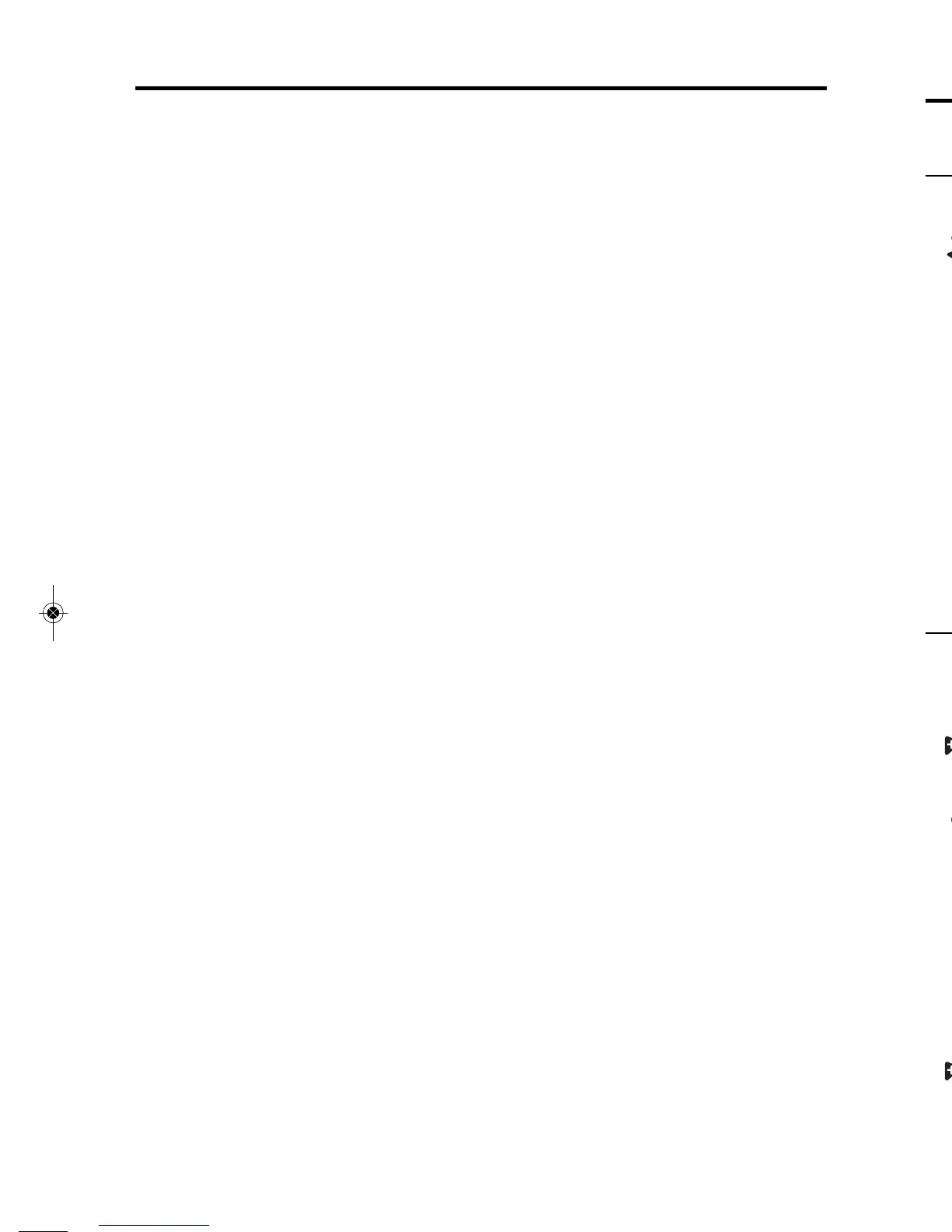